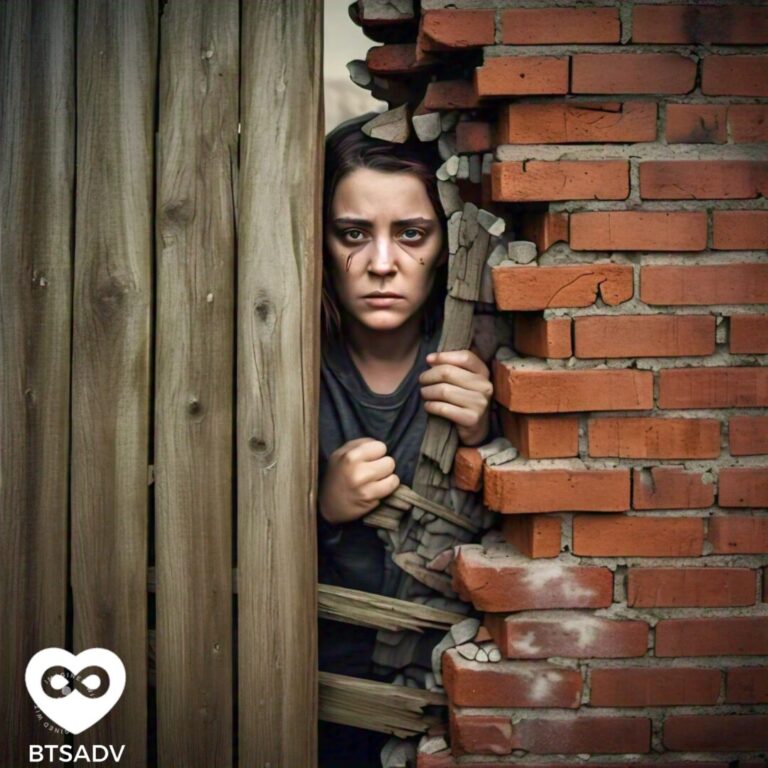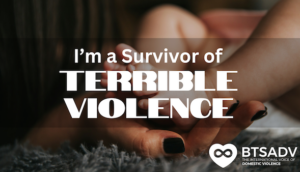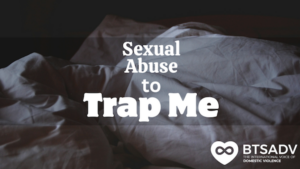By Mikayla Shave
So, you’ve come to the painful realization that you’re in an abusive relationship, but now you’re faced with the overwhelming question: what do I do next? Your mind is flooded with questions, doubts, and fears. While friends and family may have tried to help you see the situation for what it is, the decision to leave is deeply personal and complex. At Break the Silence Against Domestic Violence, we believe that your next step should be to seriously consider leaving or, at the very least, create a safety plan to protect yourself.
Yolanda Renteria wisely points out, “People involved in partner violence are often stuck in a cycle that goes from stages of tension, explosive episodes, and honeymoon periods. This dynamic often confuses the victims since they experience times when change seems possible. Over time, each stage of the cycle becomes shorter.” If you’re noticing mood swings from your abuser, understand that these periods of calm will likely grow shorter and less frequent. Being aware of this cycle is crucial when planning your next move.
Step One: Creating a Personalized Safety Plan
If you’re considering leaving, the first thing you need to do is develop a safety plan. A safety plan is a personalized, practical strategy to stay safe in an abusive relationship and prepare for leaving. For some, this could mean something as simple as sending a daily check-in text to a family member. If that text doesn’t come, they know to call the police for a welfare check. Your safety plan should include all potential scenarios—talking to loved ones, involving law enforcement, and having an escape route ready.
It’s also important to remember that leaving an abusive relationship doesn’t guarantee immediate freedom from violence. Research shows that the risk of serious harm or even femicide increases during the initial stages of a breakup. However, while leaving poses immediate risks, distancing yourself from the abuser typically leads to reduced violence in the long run (McCloskey et al., 2006).
Leaving is a delicate, often gradual process, but it can be a life-saving decision.
Step Two: Involving Children in the Safety Plan
If children are involved, they must be part of the safety plan. Educate them on what to do during violent episodes. Ensure they know never to intervene directly but leave the house and seek safety at a neighbor’s home if they are old enough. Teaching them how to call 9-1-1 is another essential step.
Step Three: Emergency Preparedness
Your safety plan should also include keeping your car ready to go in case of an emergency. Ensure the gas tank is always full, and keep only the driver’s side door unlocked to prevent your abuser from jumping into the car during your escape. If you have a spare set of car keys, hide them somewhere only you know about (Gordon, 2020).
Step Four: Packing a Go-Bag
If you’re already thinking about leaving, it’s time to pack a go-bag. If you leave quickly, this bag should contain everything you’ll need, such as cash (if possible), and valuable items like jewelry, which can be used for emergency funds. Your go-bag doesn’t need to attract attention—it could be a backpack, a shoebox, or even a plastic tub.
At a minimum, your go-bag should include:
- Copies of important documents (passports, birth certificates, ID cards, driver’s licenses)
- Children’s immunization records, health insurance, and car insurance cards
- A written list of phone numbers in case you lose access to your phone
Store all documents in waterproof containers, like Ziploc bags or sheet protectors, to avoid damage. This is vital, as access to these documents can make all the difference when escaping an abusive situation (Gordon, 2020).
Leaving an abusive relationship is never easy, but having a detailed safety plan can be the key to protecting yourself and your loved ones. Remember, support is out there, and planning can help you regain control of your life.
Hashtags: #DomesticViolence #SafetyPlan #SurvivorSupport #EndAbuse #BreakTheSilence #PrepareToLeave #SupportSurvivors #SafeEscape #DVawareness
Sources:
Gordon, S. (2020, December 27). How to Put Together a Safety Plan When You’re Being Abused.
Verywell Mind. https://www.verywellmind.com/making-a-safety-plan-to-escape-abusive-
relationship-5069959
McCloskey, L. A., Lichter, E., Williams, C., Gerber, M., Wittenberg, E., & Ganz, M. (2006).
Assessing Intimate Partner Violence in Health Care Settings Leads to Women’s Receipt
of Interventions and Improved Health. Public Health Reports, 121(4), 435–444.
https://doi.org/10.1177/003335490612100412










